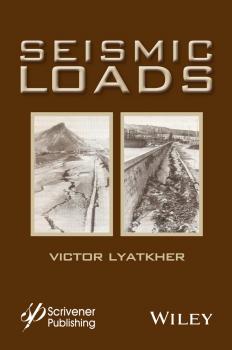Victor Lyatkher M.
Список книг автора Victor Lyatkher M.Seismic Loads
Earthquakes are a way of life on Earth, and, whether you live in an area that is often affected by earthquakes or not, every building, every road, every bridge, and, in fact, almost everything constructed by humans in which we walk, sleep, live, sit, or visit, has to be constructed to withstand an earthquake, by following local, regional, or national codes, laws, and regulations. Further to this, the science and engineering behind these constructions go further than what is mandated by government as a part of their practice. All construction, and, in general, all life on Earth, has some risk of seismic impacts. A comprehensive description of any seismic action may be given only on a probabilistic basis and, in general, is very bulky and quite uncertain. However, for a variety of structures or systems that meet fairly simple models of behavior during earthquakes, a general description of the seismic action is not required, for prediction of the status of such facilities or systems may be sufficient to define one or more common parameters of seismic impact. Thus, it makes sense to search for optimal parameters of influence in which optimality is understood with the greatest ease with sufficient information. This book contains a description of several models of seismic effects and examples of implementation of these models at specific sites. Using this information, scientists and engineers can design structures that are stronger, safer, and longer-lasting. It is a must-have for any scientist, engineer, or student working in or researching seismic loads and constructions with a view toward withstanding seismic activity.
Hydraulic Modeling
Water. Except for air, it is the most important ingredient to all life on Earth. It surrounds us every day. We are literally bathed in it, we cook our food with it, and we need a steady stream of it in our bodies every single day just to survive. But water, and the study of it, is one of the most important and unheralded branches of engineering, affecting every other aspect of engineering in almost every industry. We harness its power for energy, we inject massive blasts of it into the earth to extract oil, gas, and minerals, and we use it in nearly every single industrial application, including food processing, refining, manufacturing, and waste disposal, just to name a few. Hyraulic modeling is, essentially, the understanding and prediction of fluid flow and its applications in industrial, municipal, and environmental settings, whether in a creekbed, locked in the pores of rocks deep in the earth, or in the ocean. Mathematical models, which started out with mechanical pencils and drafting tables originally, have been increasingly relied upon over the last few decades, due to the invention, growth, and refinement of computers. Physical modeling, however, is still practiced in laboratories, and it is the intersection of physical and mathematical modeling of fluid flow that is most successful in creating models that are safer, less costly, and are better for the environment. Hydraulic Modeling introduces and explores this incredibly important science, from the most basic tenets to valuable real-world applications that are used in industry today. It is the only volume on the market to offer a thorough coverage of the subject without adding lots of useless fluff or inapplicable appendices. It is a must-have for any engineer, scientist, or student working with hydraulic modeling, as a daily reference or a textbook.
Wind Power. Turbine Design, Selection, and Optimization
An up-to-date and thorough treatment of the technologies, practical applications, and future of wind power, with the pros and cons and technical intricacies of various types of wind turbines and wind power prediction With the demand for energy outstripping availability from conventional sources such as fossil fuels, new sources of energy must be found. Wind power is the most mature of all of the renewable or alternative sources of energy being widely used today. With many old wind turbines becoming obsolete or in need of replacement, new methods and materials for building turbines are constantly being sought after, and troubleshooting, from an engineering perspective, is paramount to the operational efficiency of turbines currently in use. Wind Power: Turbine Design, Selection, and Optimization: Details the technical attributes of various types of wind turbines, including new collinear windmills, orthogonal windmills, non-vibration VAWT wind turbines, and others Covers all the updated protocols for wind power and its applications Offers a thorough explanation of the current and future state of wind power Is suitable not only as a reference for the engineer working with wind power but as a textbook for graduate students, postdoctoral students, and researchers Wind power is one of the fastest-growing, oldest, and «greenest» of the major sources of renewable energy that has been developed, with more efficient and cost-effective technologies and materials now constantly being sought for turbines and the equipment used with them. Here is a comprehensive and thorough review of the engineering pros and cons of using different kinds of wind turbines in different environments, including offshore. With full technical knowledge, engineers, managers, and other decision-makers in the wind energy industry can make more informed decisions about increasing capacity, cost-efficiency, and equipment longevity. Covering the various types of wind turbines available, such as new collinear windmills, orthogonal turbines, and others, this highly technical treatment of wind turbines offers engineers, students, and researchers insight into the practical applications of these turbines and their potential for maximum efficiency.


